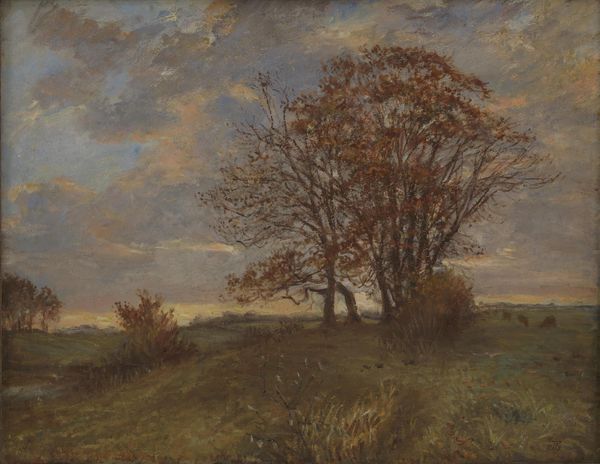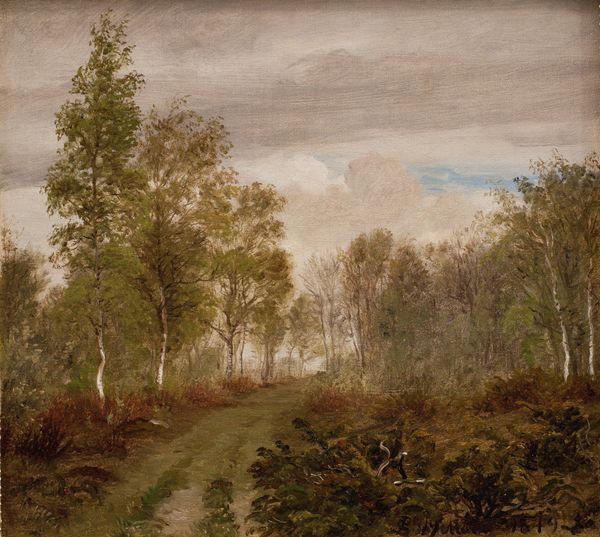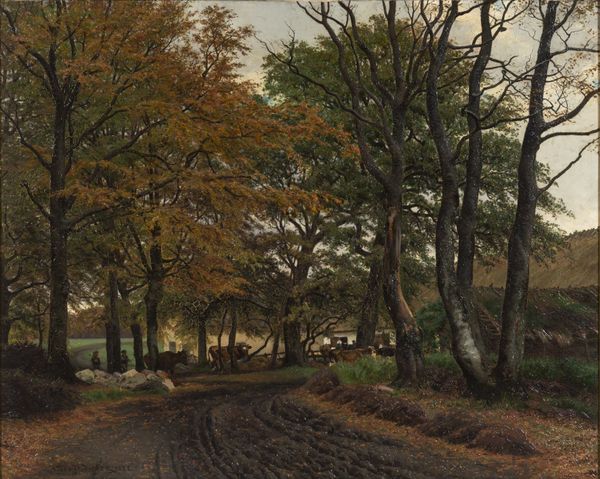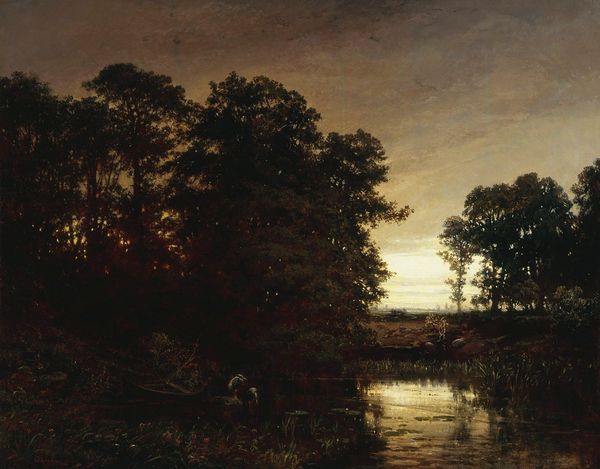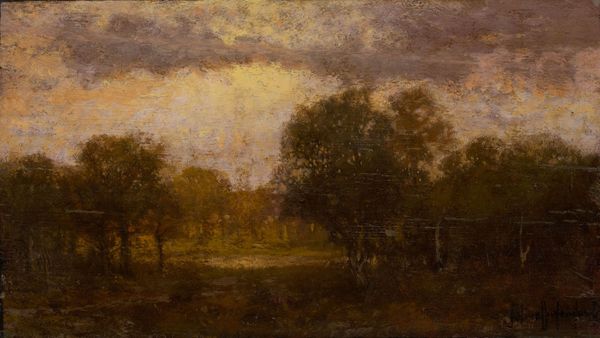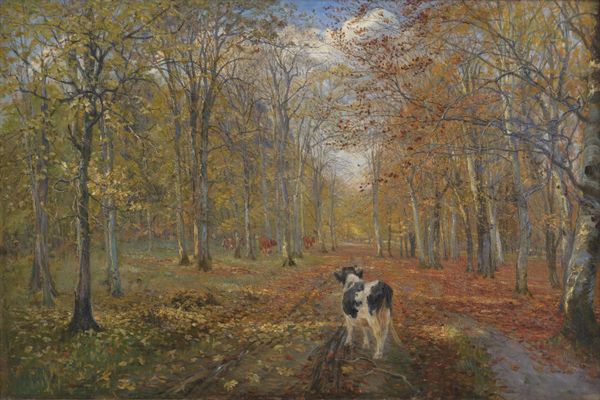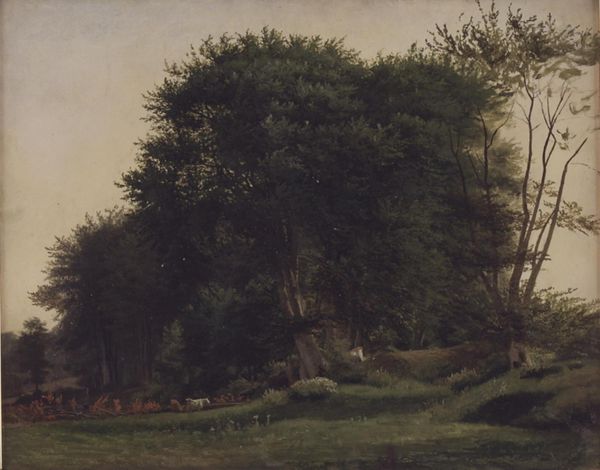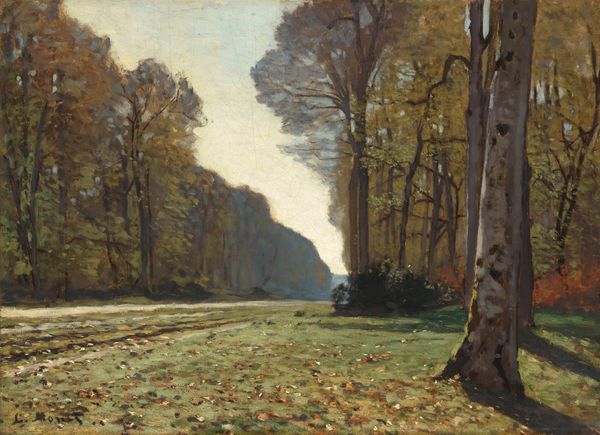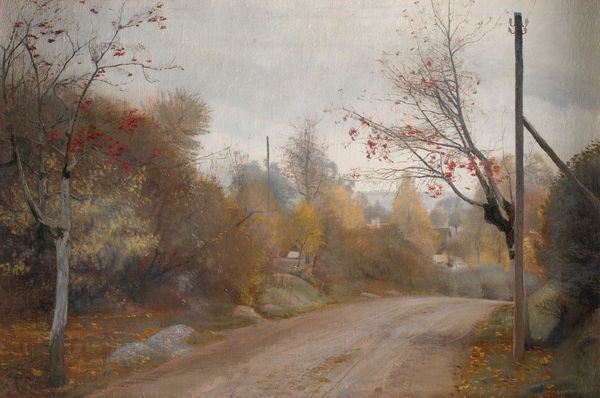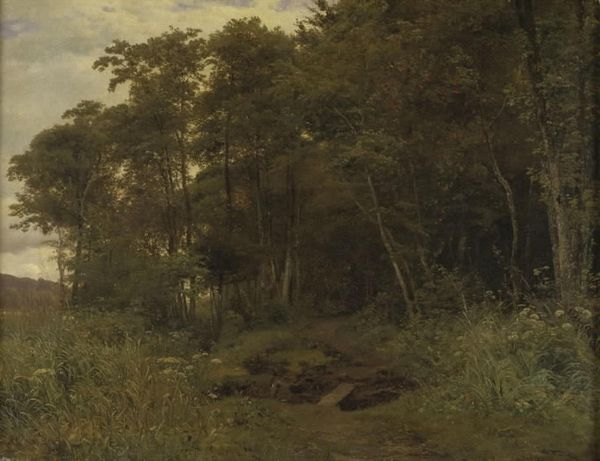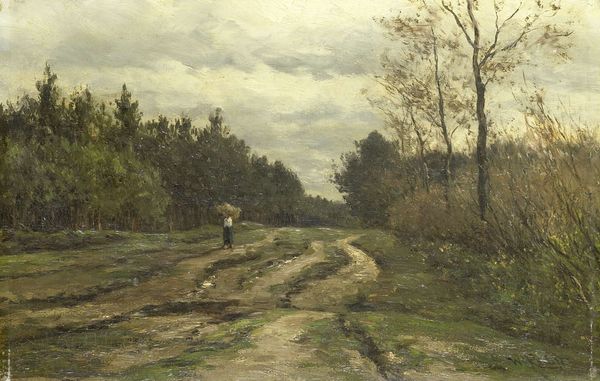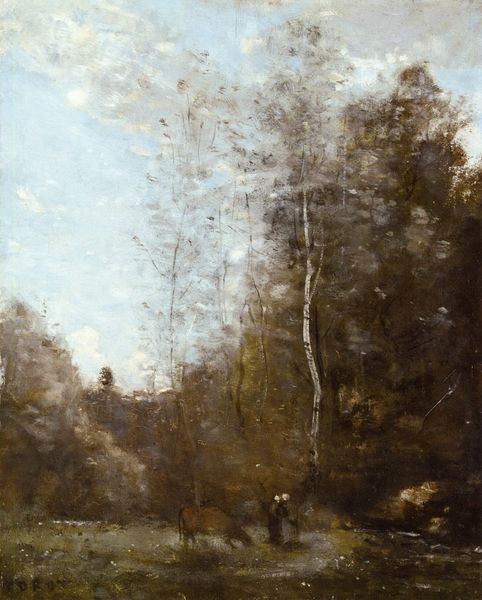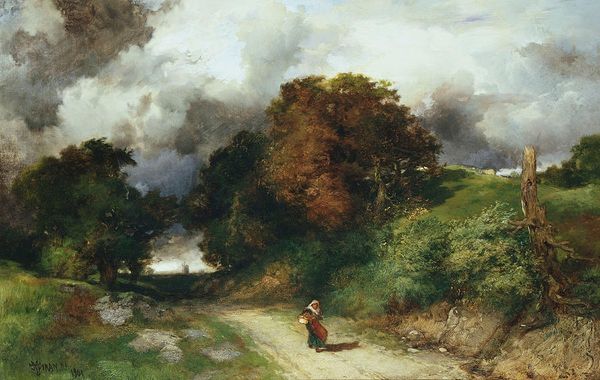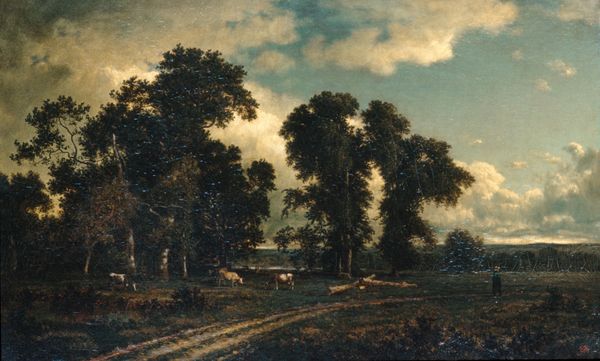
Dimensions: 84 cm (height) x 126.5 cm (width) (Netto)
Editor: Here we have "Road in Borrevejle Forest. October Day," painted by Thorvald Niss in 1878. It's an oil painting and evokes such a strong sense of quiet melancholy for me, especially with the dark colours of the road contrasting against the golden light hitting the trees. What do you see in this piece? Curator: I see an interesting example of plein-air painting engaging with Romantic sensibilities, yet grounded in the burgeoning socio-political context of late 19th-century Denmark. While formally a landscape, it’s difficult to ignore that figure labouring along the muddy track. Consider the burgeoning Realist movement happening concurrently. Editor: So, while ostensibly a beautiful scene, you're suggesting it speaks to the lives of ordinary people? Curator: Precisely! The image appears to reflect a growing awareness of social realities amongst artists during this period. What public function do you think this scene fulfilled, placed in an exhibition context? Was it purely aesthetic, or something more? Editor: Perhaps to remind the emerging middle class of the rural working class? There's definitely an element of observation, rather than idealisation, which makes me think that's plausible. Curator: Exactly. Museums were then solidifying as spaces for national identity and civic engagement. Did this artwork, shown in public exhibitions, reinforce social hierarchies, or offer an avenue for empathy? It's fascinating to ponder the socio-political ripple effects of something seemingly as simple as a landscape painting. Editor: It really shifts how I view this; it’s no longer *just* pretty. Thanks, I learned so much! Curator: My pleasure. It’s about understanding the conversations art enters within society.
Comments
No comments
Be the first to comment and join the conversation on the ultimate creative platform.
